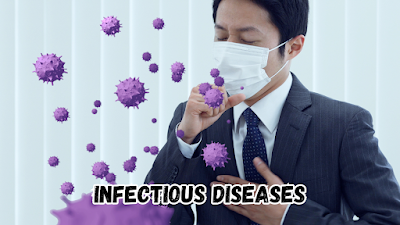Introduction
Infectious diseases, though often shrouded in mystery and misconception, are a significant global health concern. Understanding the intricacies of infectious diseases is crucial for effective prevention and control strategies.
 |
| Infectious Diseases Unmasked: 10 Surprising Facts You Need to Know Right Now |
Fact 1: Infectious Diseases Are Not Limited to Third World Countries
Contrary to common belief, infectious diseases are not exclusive to developing nations. They have a global impact, affecting populations in both developed and developing countries alike. With increased globalization and travel, the spread of infectious diseases knows no boundaries.
Fact 2: Antibiotic Resistance is a Growing Concern
Antibiotic resistance, fueled by overuse and misuse of antibiotics, poses a serious threat to public health. The emergence of resistant strains of bacteria renders commonly used antibiotics ineffective, making infections harder to treat and leading to increased morbidity and mortality rates.
Fact 3: Pandemics Are Not a Thing of the Past
Recent history has seen the emergence of devastating pandemics, such as the COVID-19 pandemic. Factors such as urbanization, deforestation, and increased human-animal interactions contribute to the heightened risk of pandemics, emphasizing the importance of preparedness and response measures.
Fact 4: Zoonotic Diseases Bridge Gaps Between Animals and Humans
Zoonotic diseases, which originate in animals but can be transmitted to humans, pose a significant public health threat. Examples include Ebola, Zika virus, and avian influenza. Encroachment into natural habitats and the wildlife trade increase the likelihood of zoonotic disease transmission.
Fact 5: Asymptomatic Carriers Play a Significant Role in Disease Spread
Asymptomatic carriers, individuals who are infected with a pathogen but show no symptoms, can unknowingly spread infectious diseases to others. Identifying and isolating asymptomatic carriers is crucial for controlling disease outbreaks and preventing further transmission.
Fact 6: Vaccination Is Not Just for Children
Vaccination is a cornerstone of infectious disease prevention, offering protection against a wide range of diseases throughout life. Despite the proven efficacy of vaccines, misinformation and vaccine hesitancy pose significant challenges to achieving herd immunity and preventing outbreaks.
Fact 7: Climate Change Can Influence Disease Patterns
Climate change has far-reaching effects on infectious disease dynamics, altering vector habitats, precipitation patterns, and temperature extremes. Diseases such as malaria, dengue fever, and Lyme disease are sensitive to climatic conditions, leading to shifts in their geographic distribution and seasonality.
Fact 8: Infectious Diseases Can Be Transmitted Through Various Routes
Infectious diseases can be transmitted through multiple routes, including direct contact, airborne transmission, and ingestion of contaminated food or water. Practicing good hygiene, such as handwashing and proper food safety measures, is essential for reducing the risk of infection.
Fact 9: Socioeconomic Factors Affect Disease Spread and Treatment
Socioeconomic factors, such as poverty, access to healthcare, and education levels, play a significant role in determining the burden of infectious diseases. Vulnerable populations often bear the brunt of disease outbreaks, highlighting the need for equitable access to healthcare and social support systems.
Fact 10: Technology Plays a Vital Role in Disease Surveillance and Control
Advancements in technology have revolutionized disease surveillance and control efforts, allowing for rapid detection, response, and monitoring of infectious disease outbreaks. Tools such as genomic sequencing, predictive modeling, and mobile health applications enable more effective public health interventions.
Conclusion
Infectious diseases continue to pose a formidable challenge to global health security, requiring concerted efforts from governments, healthcare professionals, and the public alike. By understanding the key facts and adopting preventive measures, we can mitigate the impact of infectious diseases and safeguard public health.
FAQs
What are the most common infectious diseases?
- Answer: Common infectious diseases include influenza, tuberculosis, malaria, HIV/AIDS, and diarrheal diseases.
How can I protect myself from infectious diseases?
- Answer: Practicing good hygiene, staying up-to-date with vaccinations, avoiding close contact with sick individuals, and following public health guidelines can help prevent infectious diseases.
Are all infectious diseases curable?
- Answer: While many infectious diseases are treatable with medication or vaccines, not all are curable. Treatment options vary depending on the specific disease and its severity.
What role does the government play in controlling infectious diseases?
- Answer: Governments play a crucial role in implementing public health policies, funding research and development, and coordinating responses to infectious disease outbreaks.
How do infectious diseases affect travel?
- Answer: Infectious diseases can impact travel through travel restrictions, quarantine measures, and the risk of disease transmission in crowded or confined spaces such as airplanes and cruise ships.